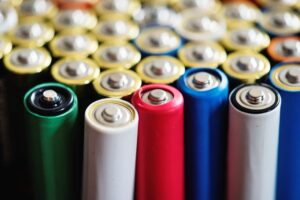
New York City, renowned for its Noise of honking cars, blaring stereos, and lively neighbors, has struggled with the challenge of noise pollution. In a bid to address this issue, the city has found a new weapon that is noise cameras. Located in a wealthy area of the Upper West Side of Manhattan. These noise cameras are equipped with sound meters and aim to detect noise exceeding 85 decibels from sources 50 feet or more away.
A Proactive Move Against Excessive Noise
Initiated by the city’s Department of Environmental Protection. The program gained momentum with the signing of the Stop Loud and Excessive Exhaust Pollution (Sleep) Act by New York Governor Kathy Hochul. This legislative move elevated fines for vehicles modified to produce disruptive noise. By focusing on the thunderous revs of motorcycles and cars. First-time offenders face a fine of $220, escalating to a much higher $2,625 for repeat violations.
Noise Cameras Nationwide
New York City is not alone in its battle against noise. Cities like Knoxville, Tennessee; Miami; and sections of California have joined forces with the UK-based company SoundVue. Intelligent Instruments Ltd owns SoundVue. According to Reuben Peckham, a director at the company. The baseline infraction of 85 decibels registered by the cameras is like the noise level radiating from a lawn mower at the operator’s position.
Peckham remains tight-lipped about the cost of these noise cameras. By revealing only that the basic structure employs a microphone and algorithm to detect noise. Logging the license plate of the offending vehicle. The innovative technology utilizes a slight delay in sound reaching each microphone to pinpoint the precise source.
Noise Cameras as a Superficial Solution
But, not everyone is convinced of the efficacy of noise cameras in combating noise pollution. Erica Walker, an assistant professor of epidemiology at Brown University, contends that most noise issues stem from poor city planning rather than individual misconduct. She views noise cameras as a “lazy and superficial solution” and advocates for a more collaborative approach. where communities find solutions instead of resorting to punishing measures.
Walker draws on her research experience in Boston, where noise complaints often centered around Fenway Park. She highlights the impracticality of placing noise cameras in sports fields. Underscores the risk of targeting communities of color with these surveillance tools.
Could Noise Cameras Over-Police Communities?
A lasting worry is the potential for noise cameras to worsen racial disparities in policing. Peckham, the manufacturer, dismisses this idea, labeling it as “nonsense”. By asserting that surveillance only occurs if a violation is committed. Critics argue that the implementation of such technology may over-police communities of color, perpetuating existing inequalities.
Health Risks Associated with Prolonged Noise Exposure
Beyond the inconvenience of noise. There are serious health risks associated with extended exposure to loud sounds. Richard Neitzel, a professor of environmental health studies at the University of Michigan, points to a growing body of literature connecting noise with cardiovascular disease, high blood pressure, and the risk of heart attacks and strokes.
While the focus is often on urban environments, Neitzel highlights that rural areas are not immune to the effects of noise pollution. The Apple Hearing Study at the University of Michigan involving 130,000 participants, revealed that smaller towns could be as loud as their urban counterparts. With different sources of exposure such as workplaces, agriculture, or manufacturing plants.
New York City’s Battle Against Noise
New York City’s struggle with noise is not a recent development. In 1906, physician Julia Barnett Rice initiated the Society for the Suppression of Unnecessary Noise, gathering notable members like Mark Twain and Thomas Edison. Despite early reforms, noise continued to escalate throughout the 20th century.
In 1935, Mayor Fiorello H La Guardia took decisive steps to tackle noise, tearing down elevated subway lines and implementing legislation restricting acoustic activities. But, these measures proved insufficient. The 1990s saw “Operation Soundtrap,” a crackdown on boom boxes by the NYPD, which affected young men of color. Raised questions about the identity-based regulation of noise.
Concerns about Surveillance Capabilities
Audrey Amsellem, a lecturer at Columbia University specializing in sound and surveillance. Expresses reservations about the surveillance capabilities of noise cameras. Once installed, these AI-driven devices rarely come down, and more capabilities can be added over time. Amsellem questions the potential privacy risks for residents and raises concerns about who benefits and who bears the brunt of this technology.
Gentrification and Noise Policing
Xochitl Gonzalez, a Pulitzer Prize finalist, sheds light on the classist dimension of noise policing. A Brooklyn native, Gonzalez experienced firsthand the clash between the sounds of her neighborhood and the hushed aesthetic of an Ivy League environment. She emphasizes that “the sound of gentrification is silence,” recounting how affluent transplants filed noise complaints against her community.
In the complex of noise regulation, Gonzalez’s narrative adds a crucial layer, highlighting the socio-economic aspects of noise complaints and their intersection with issues of identity and privilege.
Conclusion
As noise cameras become a prominent tool in the fight against sound pollution, it’s essential to examine their implications. While aiming to create quieter urban spaces, we must navigate the fine line between addressing genuine concerns and perpetuating social disparities.
Image Source: hudsonvalleycountry.com
Read Next Blog:
15 Free Things To Do in Chicago this Weekend







